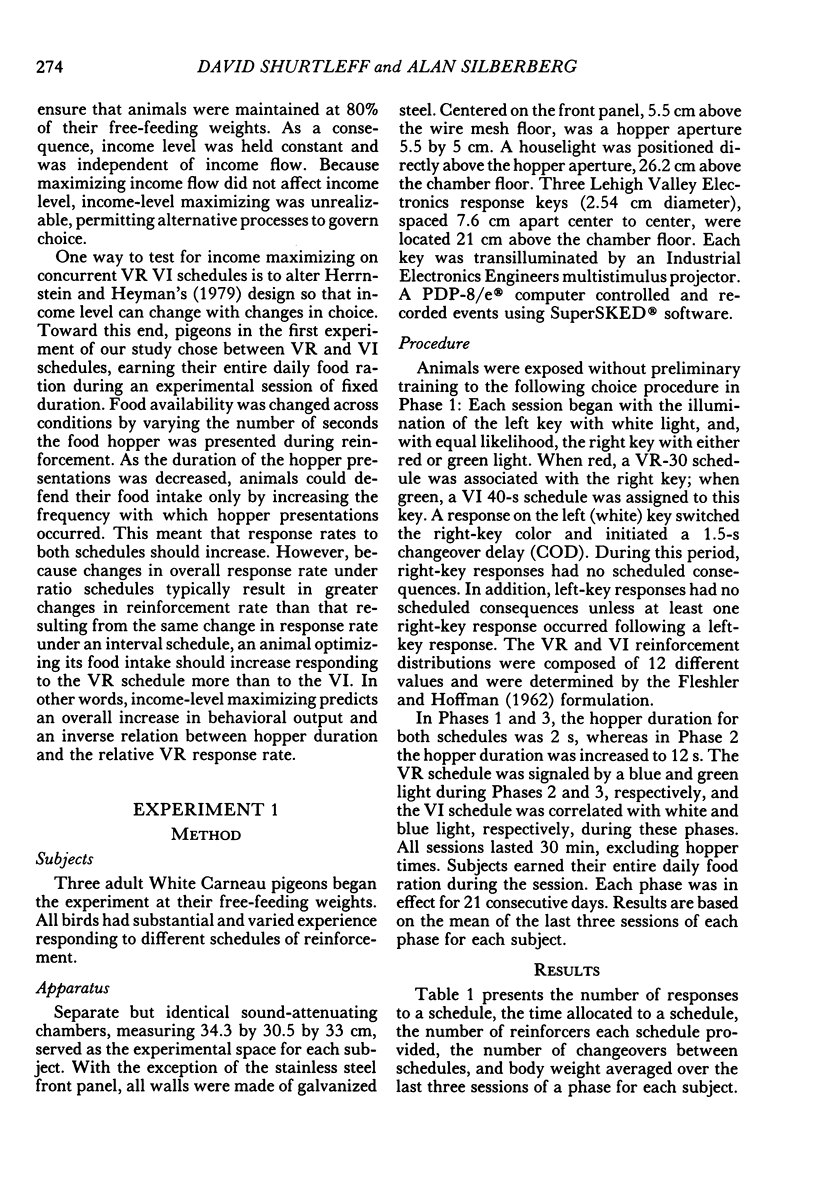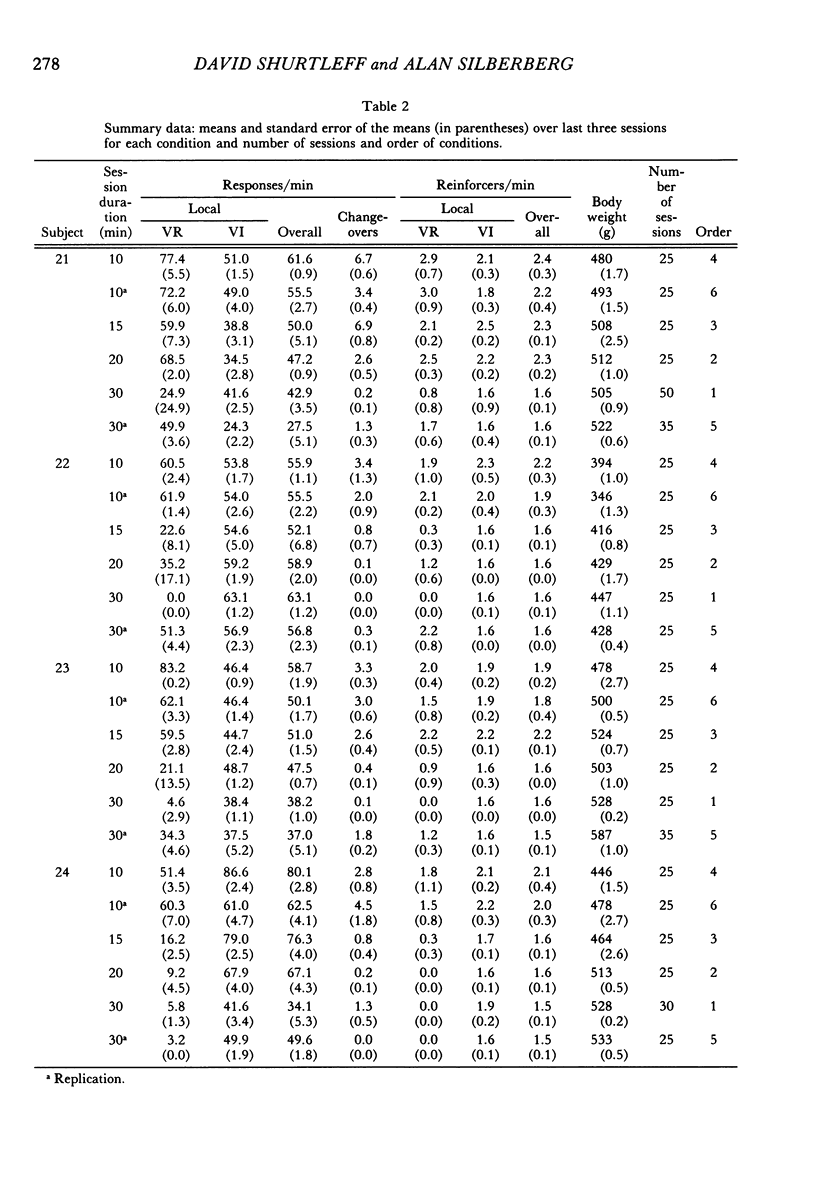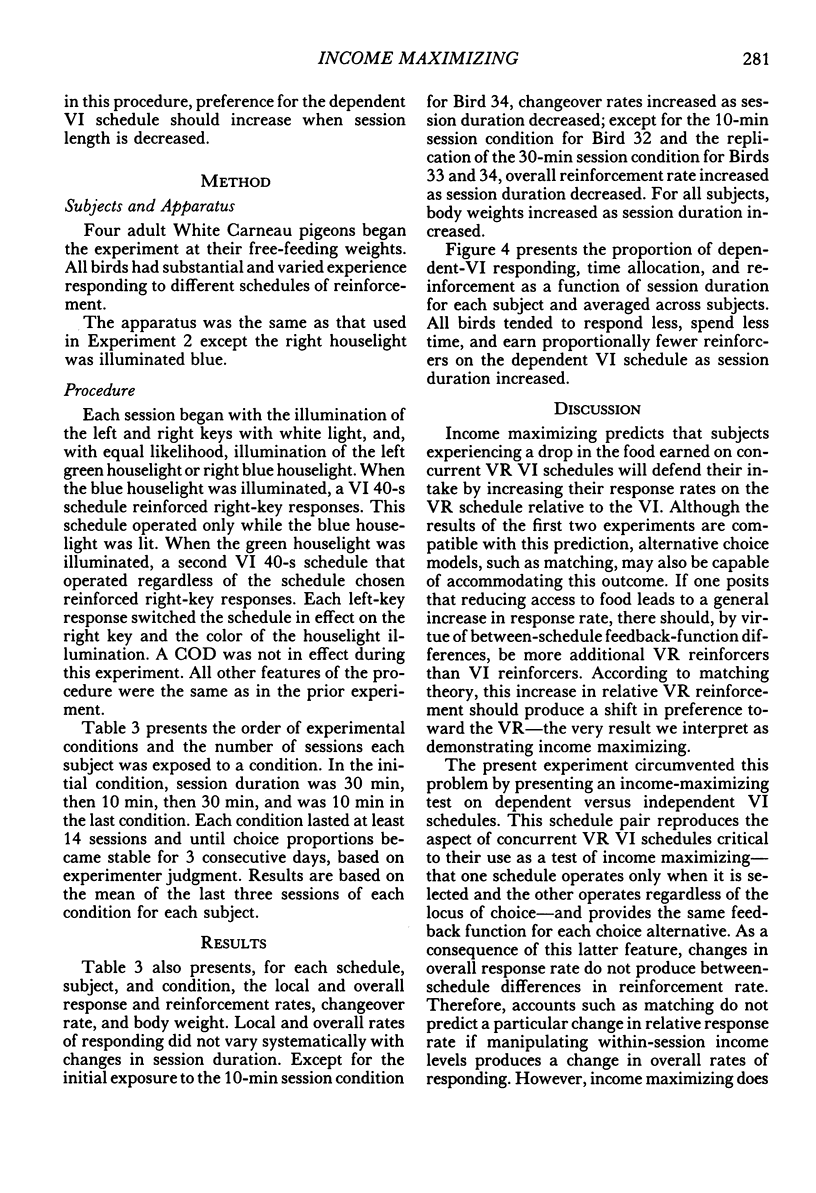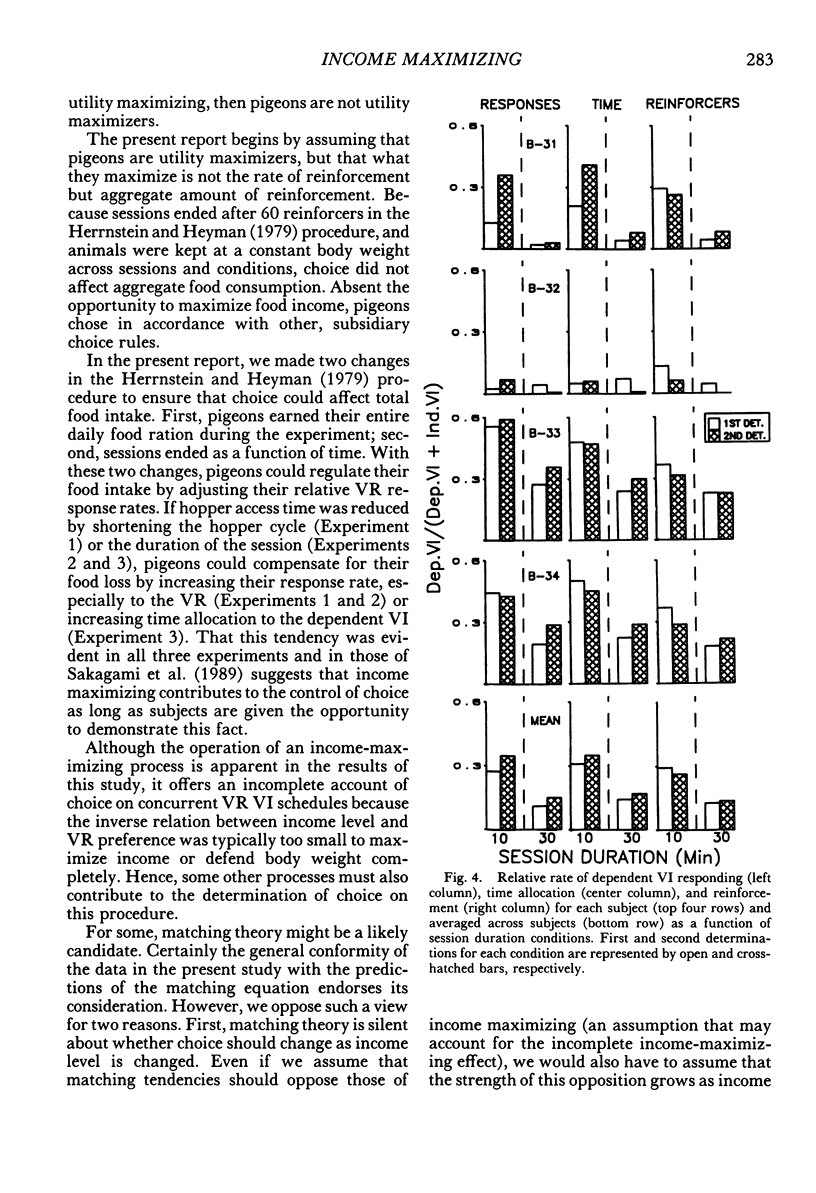Abstract
Three experiments examined the effect of food availability on pigeons' choice behavior under concurrent schedules of reinforcement. In Experiment 1, 3 pigeons earned their daily food ration by choosing, in 30-min sessions, between concurrent variable-ratio 30 variable-interval 40-s schedules. Food presentations during both schedules lasted 2 or 12 s, depending upon the condition. Relative variable-ratio response rate was inversely related to hopper duration. In Experiment 2, 4 pigeons received their daily feeding by responding on the same schedule pair as in Experiment 1 (with 4-s food presentations) in sessions that varied in length from 10 to 30 min, depending on the condition. The length of a vertical slit projected on a response key increased with time so that “passage of time” might be more easily discriminable. As session duration decreased, relative variable-ratio response rate increased. In Experiment 3, 4 pigeons chose between two variable-interval 40-s schedules. One schedule operated without regard to the schedule selected, whereas the other operated only when the subject responded in its presence (dependent). Although these schedules had the same feedback function, preference for the dependent variable interval increased as session duration decreased from 30 to 10 min. The preference changes in these studies reveal the operation of an income-maximizing process in choice.
Keywords: economics, concurrent variable-ratio variable-interval schedules, maximizing, key peck, pigeons
Full text
PDF











Selected References
These references are in PubMed. This may not be the complete list of references from this article.
- Baum W. M. On two types of deviation from the matching law: bias and undermatching. J Exp Anal Behav. 1974 Jul;22(1):231–242. doi: 10.1901/jeab.1974.22-231. [DOI] [PMC free article] [PubMed] [Google Scholar]
- Clark F. C. The effect of deprivation and frequency of reinforcement on variable-interval responding. J Exp Anal Behav. 1958 Aug;1(3):221–228. doi: 10.1901/jeab.1958.1-221. [DOI] [PMC free article] [PubMed] [Google Scholar]
- DeCarlo L. T. Matching and maximizing with variable-time schedules. J Exp Anal Behav. 1985 Jan;43(1):75–81. doi: 10.1901/jeab.1985.43-75. [DOI] [PMC free article] [PubMed] [Google Scholar]
- FLESHLER M., HOFFMAN H. S. A progression for generating variable-interval schedules. J Exp Anal Behav. 1962 Oct;5:529–530. doi: 10.1901/jeab.1962.5-529. [DOI] [PMC free article] [PubMed] [Google Scholar]
- Herrnstein R. J., Heyman G. M. Is matching compatible with reinforcement maximization on concurrent variable interval variable ratio? J Exp Anal Behav. 1979 Mar;31(2):209–223. doi: 10.1901/jeab.1979.31-209. [DOI] [PMC free article] [PubMed] [Google Scholar]
- Heyman G. M., Herrnstein R. J. More on concurrent interval-ratio schedules: a replication and review. J Exp Anal Behav. 1986 Nov;46(3):331–351. doi: 10.1901/jeab.1986.46-331. [DOI] [PMC free article] [PubMed] [Google Scholar]
- Sakagami T., Hursh S. R., Christensen J., Silberberg A. Income maximizing in concurrent interval-ratio schedules. J Exp Anal Behav. 1989 Jul;52(1):41–46. doi: 10.1901/jeab.1989.52-41. [DOI] [PMC free article] [PubMed] [Google Scholar]
- Silberberg A., Warren-Boulton F. R., Asano T. Maximizing present value: A model to explain why moderate response rates obtain on variable-interval schedules. J Exp Anal Behav. 1988 May;49(3):331–338. doi: 10.1901/jeab.1988.49-331. [DOI] [PMC free article] [PubMed] [Google Scholar]
- Ziriax J. M., Silberberg A. Concurrent variable-interval variable-ratio schedules can provide only weak evidence for matching. J Exp Anal Behav. 1984 Jan;41(1):83–100. doi: 10.1901/jeab.1984.41-83. [DOI] [PMC free article] [PubMed] [Google Scholar]


